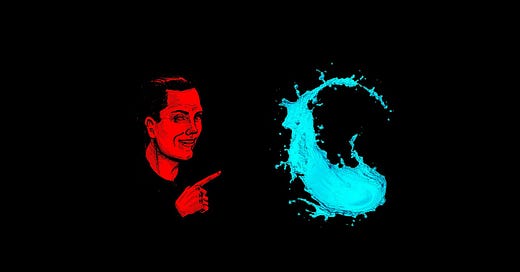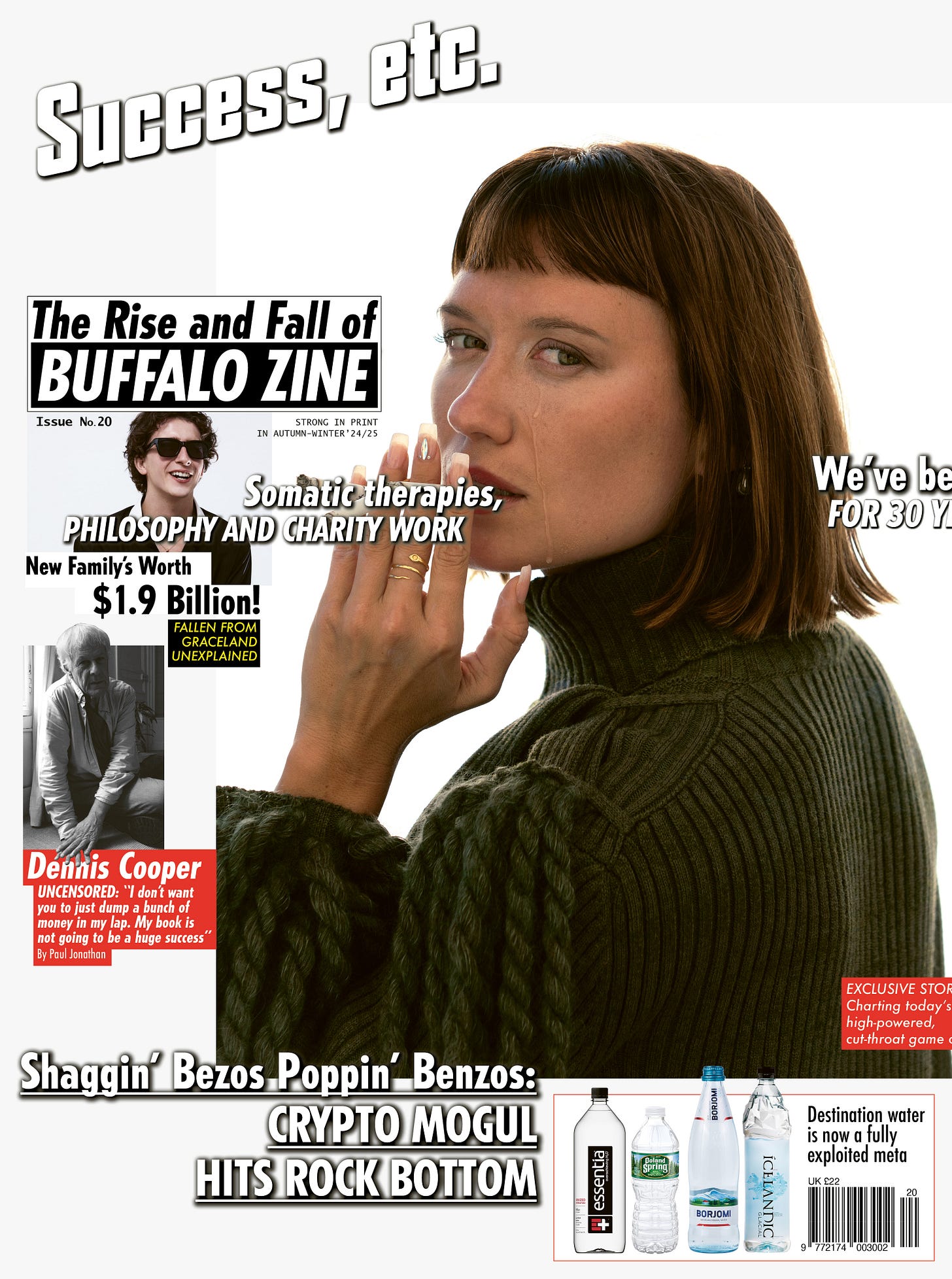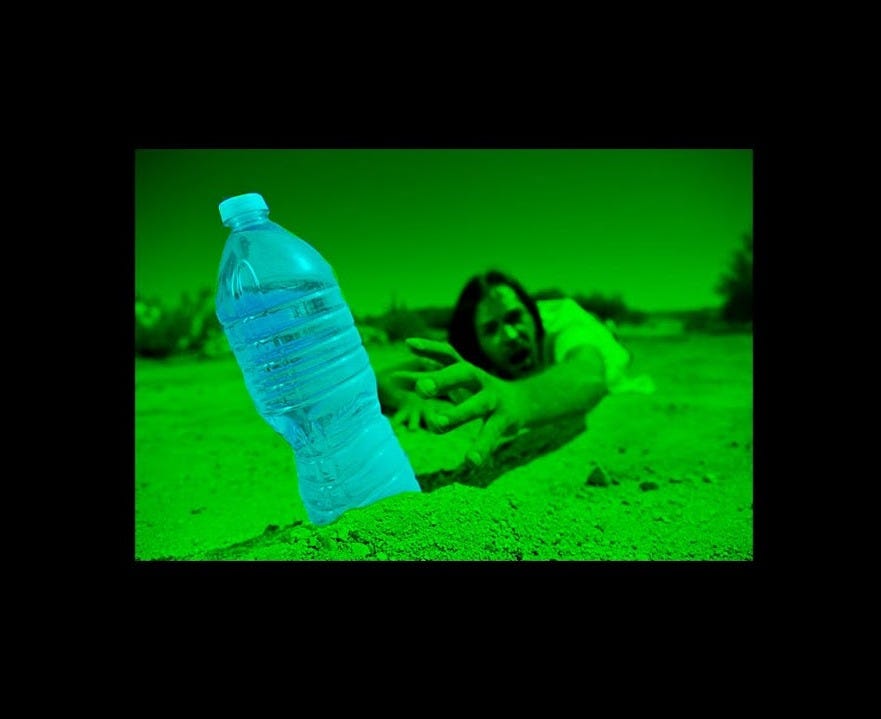This is a piece we wrote for the latest issue of Buffalo Zine :)
What makes products successful? Success is in the eye of the product’s producer. They’re meant to be sold, directly or indirectly. If they do, that’s success.
Success is amoral – the product itself doesn’t need to be good to its consumer or wider society. Oxycontin is a super successful product, so are 501s, Q-tips and AK-47s.
But of course actually benefiting the consumer is a decent strategy for creating a successful product.
To a consumer the success, or popularity, of a product is a great heuristic to gauge or validate the consensus of our collective consumer intelligence, or its degree of delusion.
“A million geniuses bought this”
or
“A million people like me bought this”
or
“A million idiots bought this”
But there’s a wider obsession with ranking the success of products beyond using it as an input for personal consumption choices. Successful products are now main characters in our lives – protagonists with their own cultural gravity, ethos and lore.
We know *almost anything* can be made into a product – “an article or substance that is manufactured or refined for sale” as per the dictionary definition.
Anything can be productized.
We’ve seen how malleable the boundary between an idea and a product is. How a thing that’s barely a thing can become a low production cost, high margin thing. Someone you know has done it. Productized their content, hobby, cultural sensibility, style, personal productivity system, regional condiment, meme and made it.
The lore is baked into the value of the product – it becomes the story of founders, heritage brands, family recipes, etc.
Analogous to how, statistically speaking, way too many people identify as “pre-rich”, we’ve come to look at the world as filled with things in a pre-product state, ready to be transformed into products and sold by those savvy enough.
“You know, you should really sell this stuff”. You’ve heard it.
In that sense, there are few things more successful than water.
We need it to survive, and in many parts of the world water is freely available and considered a human right. Yet, there is a universal impulse to transform water into a branded product – to make it expensive, rare or somehow “better” for the sake of profit. In 2022 the global bottled water market was valued at $303.95 billion, and by 2032 is expected to exceed $500 billion. This is the amorality of success.
In its natural state, as H2O molecules formed billions of years ago, water is not a product. So what takes it from pre-product to product? Why would people pay for something they can get for free and how is this achieved?
Pre-product → Product
Many products begin their lives unmonetized and are made successful through simple repricing.
Their precursors exist in nature or in culture as ideas and goods that are essentially identical to their productized counterparts. They are necessary (water, food, sunlight) but not commercialized (Essentia, McDonald's, full spectrum light bulbs).
Springwater is transformed into a product when placed in a bottle. Directional freezing allows manufacturers to remove impurities from H2O and produce “clear ice” for sculpting and upscale cocktail bars.
The commercial value and demand for water is increased through the addition of labor, rhetoric, branding or some combination of the three. This can occur with or without a cultural narrative to support it, as long as there’s some kind of scarcity that introduces a price.
Brandless → Branded
Brands often emerge by giving narrative shape to an existing want or need. They repackage a common desire or popular solution by telling a story that makes it specific and special. That person isn't crazy, they have “borderline personality disorder”; that isn't just any water, it's New York City tap water, the best in the world.
Through the simple act of naming a thing can become a thing. By giving it an aesthetic and an attitude it can become a brand, a luxury, even more…
Liquid Death turns dry drunk sobriety into a lifestyle brand through the addition of a flaming skull and beer can silhouette. It is virtuous to use your Hydro Flask, Kleen Canteen, Owala to bring your own water from home. It is aspirational to have cases of Essentia or Mountain Valley Spring in your office.
Of course branding isn't a sure shot path to success. APE Water uses the founders’ Bored Apes Yacht Club NFTs to brand canned spring water – to turn the perfectly fine water into something equally undrinkable and unsellable.
Having a brand doesn’t necessarily mean a thing needs to become a product itself. The “Drink Water” campaign transforms standard living procedure into a movement that tells young athletes to avoid the lure of sugary energy drinks. You can practice the Wim Hof cold water immersion method without purchasing a tank filled with Wim Hof™ ice water.
Branded Products
Most great products from the 20th century used branding to create something that seemed singular and iconic – and vice versa: singular and iconic brands were built around successful products. A bottle of Coke, iPhone or an Aeron Chair come to mind.
The sense of singularity was deeply baked into the lore. Only Steve Jobs could build it, Coca-Cola's secret recipe etc. Brands established distinct codes, colors and behaviors that reinforced their cultural gravity.
Fiji water comes from an inaccessible island, San Pellegrino has a unique mineral composition. These kinds of stories are becoming harder to construct and maintain as there are more and more products available over time. Destination water is now a fully exploited meta: you can buy Icelandic water, Georgian water or any other carbonated European spring water in infinite variations.
While the most spectacular and celebrated product success stories, and related profits, happen in the top right quadrant of our diagram, there is an inflection point in crowded markets where branded products lose ground to more generic, commodified ones; where narrative, story and brand are no longer necessarily for success and can even get in the way.
The brand-pilled boomer is conditioned to love Fiji; the contemporary mommy buys a Berkey to “make” their own water.
Brandless Products
Due to advances in technology (AI), automation, supply chain optimization and distribution, the cost of creating new products and brands to support them is approaching zero. As newness is cheaper to create we have more and more products, more and more brands, to the point where their oversupply – materially (junk) and informationally (noise) – makes their ‘unique value propositions’ increasingly illegible. Airways, NIO, BYD, Xpeng, Foton, Byton? HydraPak, Corkcicle, Platypus, MiiR, EcoVessel, S'ip, Mizu, bkr, Ello, Flask, Zojirushi, Avana?
The oversupply of uniqueness has an opposite effect than intended: it averages out differences between brands and products competing for the same market share, effectively making them indistinct from each other and leaving price as the only distinguishing factor.
Hence the increasingly dominant meta of generic banality. The lack of a story, identity or any tangible brand is at the heart of platforms like Temu that lean entirely into radically repricing products to make them more desirable. It doesn’t matter who made it or where it came from when you’re buying a go-kart for 99 cents.
In this meta brands are traded for a kind of minimum viable coordination point: a website, white labeling service, Instagram page without any legible (hi)story (something we explored in an analysis of the Chinese hand-held gaming device company Anbernic). The main function of a brand is to make the products manufactured and marketed under it discoverable.
Success = You meet the consumer where they’re at.
Maybe that’s the universal formula?
Sometimes your customer wants something iconic and singular with its own lore.
Sometimes your customer wants something cheap and easy.
Sometimes your customer doesn’t know what they want and you need to show them.
Sometimes your customer doesn’t want what you're selling but doesn’t have a choice. Sometimes your customer is the product – or maybe it's actually you?
Mildly thirsty person on the street → Poland Springs
Every German → Sprudelwasser delivered at home by the crate
The class anxious → VOSS
Trapped dehydrated festival-goers → $15 white label water
Picnickers → Commodified ice at a reasonable price
Farmers across the world → Formerly publicly managed water sold at a 1000x markup
Men of culture → Borjomi
“Be like water” as they say.










